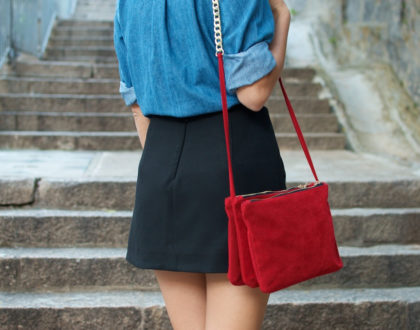YW Boston Girls’ Health Coordinator interviewed on sexism in dress codes

YW Boston’s Girls’ Health Coordinator, Brianna Moody, was interviewed by high school reporter Imani Clark for Boston Teens In Print about whether dress codes are sexist. Read the article online here or read on below.
SCANDAL OR SEXISM? THE HIGH SCHOOL DRESS CODE
All it comes down to is an appropriate level of comfort.
Imani Clarke
Throughout many of America’s schools, students are burdened by a harsh and strictly enforced school rule: the infamous dress code. Whether you attend private school that requires a uniform, or a public school in which you have options for your clothing within certain limits, the dress code still exists. Many of the rules highly affects one gender over the other, and that gender happens to be (drum roll please)…girls. Young women have always borne the brunt of the school’s dress code due to it being largely based upon policing female clothing. You name it and the dress code has a problem with it.
The dress code at the John D. O’Bryant High School states: Skirts and shorts must not be more than 3 inches above the knee. Tights/leggings must be covered by a skirt, shorts, or some other top falling no more than 3 inches above the knee. Cutoff shirts (shirts that bare midriffs, back, or excessive cleavage) spaghetti strap (less than 1 inch) tank tops, bustiers, and halter tops are not allowed.
The biggest debate around the dress code seems to be this: is the amount of skin girls show distracting the male population? Supposedly, showing a certain amount of skin is too distracting. If that is true, then why isn’t there stricter opposition to boys sagging their pants? Surely, that is just as distracting as a female wearing a shirt showing her shoulders. Imagine walking down the hallway and seeing a boy, but instead of looking at his face, you are blinded by his bright yellow Spongebob boxers! Although the O’Bryant dress code says “exposed undergarments/shorts are not permitted,” the dress code is rarely enforced among males. This is clearly a double standard.
Briana Moody, the Girl’s Health Coordinator at the YWCA, had insightful comments on the psychological impact of the unequal dress code. “Girls are being publically humiliated. They feel shame, anxiety, and self hate. Those emotions tie to depression, eating disorders, and vicious cycles.” This suggests that dress codes are often implemented in such a way that girls begin to develop self esteem issues where they do not feel comfortable in their own bodies. Moody also says, “girls are not and should not be responsible for boys’ behavior.”
When asked if he finds what females wear to school distracting, Ibrahim Dahir, a junior at the O’Bryant said, “No, I don’t. If you come to school for the right purposes, such as to learn and educate yourself, I don’t think that what the people around you are wearing or doing should affect you.”
Madolia Domendos, also a junior at O’Bryant, finds that curvier girls are often the ones who students and staff scrutinize most. “It makes me feel uncomfortable because if I wear leggings to school, I receive negative attention. People will come up to me and ask, ‘where are your clothes?’”
The fact that the school dress code is so frequently biased is very hard to comprehend. Yes, there are certain things that are and are not appropriate to wear to school. But, if it is ninety degrees outside you cannot expect someone to come to school in a turtleneck and sweatpants. All it comes down to is an appropriate level of comfort. If the people around you are not comfortable with what YOU are wearing, on YOUR BODY, then that is THEIR problem.
Although there have been major steps taken towards gender equality and women’s rights, there is still a lot of work to be done. It is sad that girls cannot come to school without being scrutinized for their clothing. At the end of the day, we should all learn to treat each other with more respect and especially to treat females as human beings — not objects.
